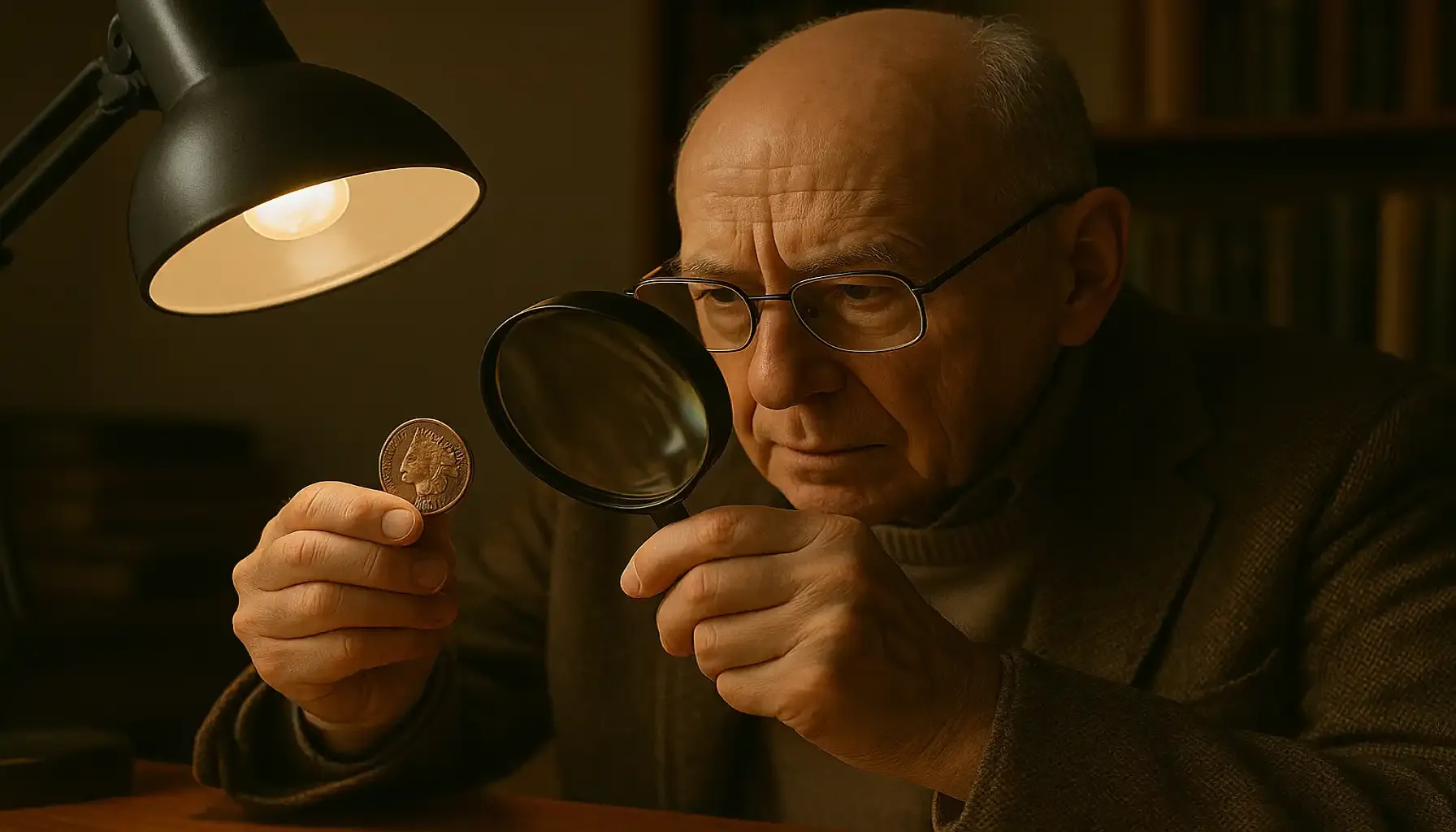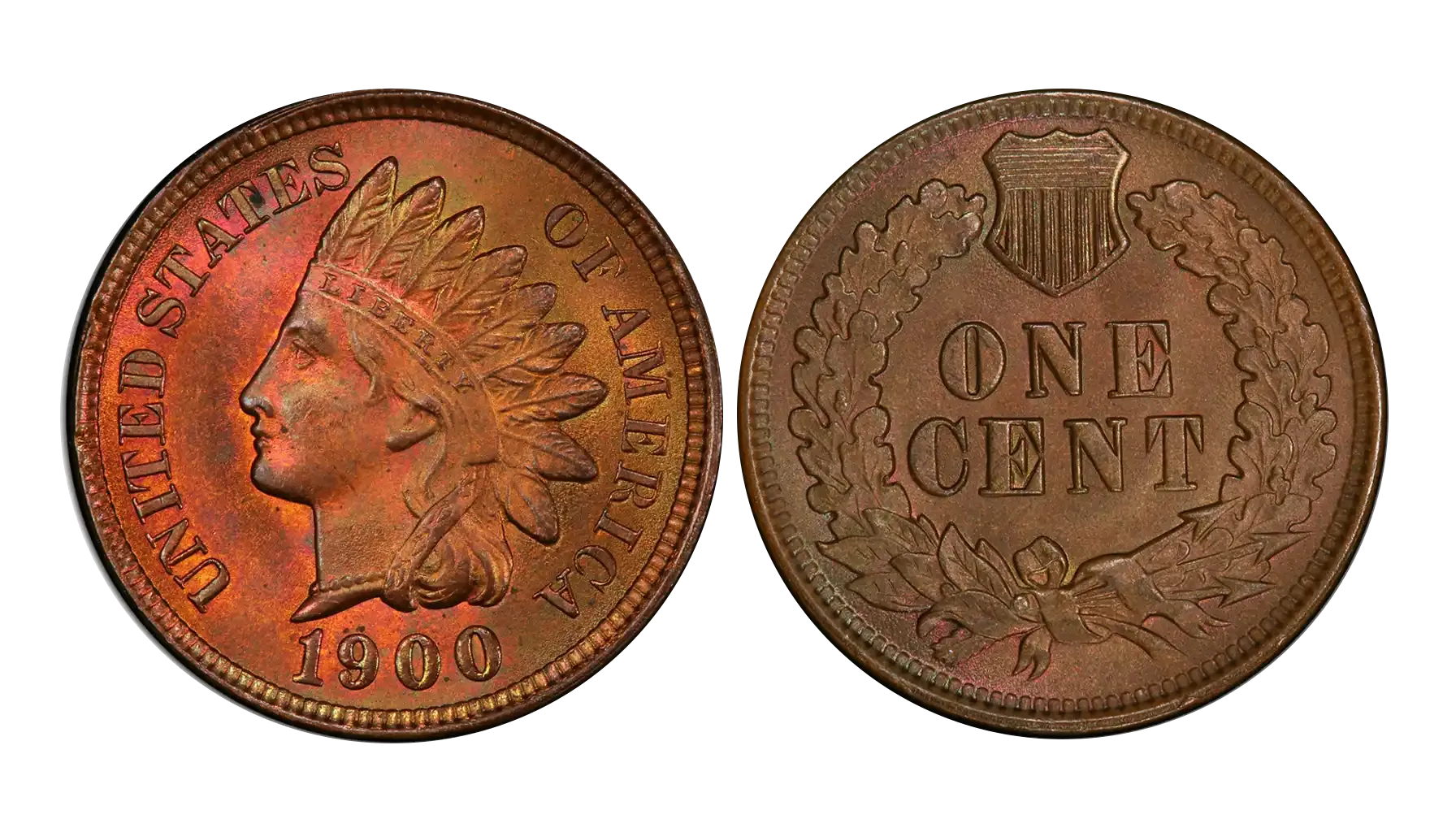Contents:
- The Year the Mint Got Weird
- Design
- How Much Is a 1922 Penny Worth?
- Errors and Varieties That Pay
- Color Grading: Red vs. Red-Brown vs. Brown
- Full Strike / Full Detail (a.k.a. "Strong Reverse" or "Strong Obverse")
- What Is a 1922 Penny Worth If You're Selling?
- Not Just American: Other 1922 Examples
- Want to Know Your 1922 Lincoln Penny Value Today?
- FAQs
Why Is 1922 No Ordinary Cent Year?
When someone asks, “How much is a 1922 wheat penny worth?”, most coin collectors smile — because 1922 isn’t just another date on a one-cent coin. It’s a numismatic enigma.
Between minting anomalies, missing marks, misstrikes, and some surprisingly rare survivors, the 1922 penny value today can swing from a few cents to thousands of dollars.
This wasn’t a year with coins from every mint. In fact, 1922 Lincoln pennies were struck at only one location: Denver. That’s where the chaos — and collectibility — begins. And that’s why it may become difficult to identify the coins for beginners.
Specification | Detail |
Designer | Victor David Brenner |
Composition | 95% Copper, 5% Tin and Zinc |
Weight | 3.11 grams |
Diameter | 19.05 mm |
Edge | Plain |
Mint(s) | Denver (D) only |
Varieties | D, Weak D, 1922 no mint mark penny (aka Plain) |
Obverse Design | Lincoln's Portrait |
Reverse Design | Wheat Ears |
The Year the Mint Got Weird
In 1922, only the Denver Mint struck Lincoln cents. The Philadelphia and San Francisco Mints didn’t make any pennies that year — a highly unusual move.
Due to overused and heavily worn dies at the Denver Mint, multiple striking errors occurred, including the famous 1922 no mint mark coin, also called the 1922 plain penny. Combine that with pressure to meet production quotas, and what you get is a year filled with mishaps… and money-making opportunities for collectors.
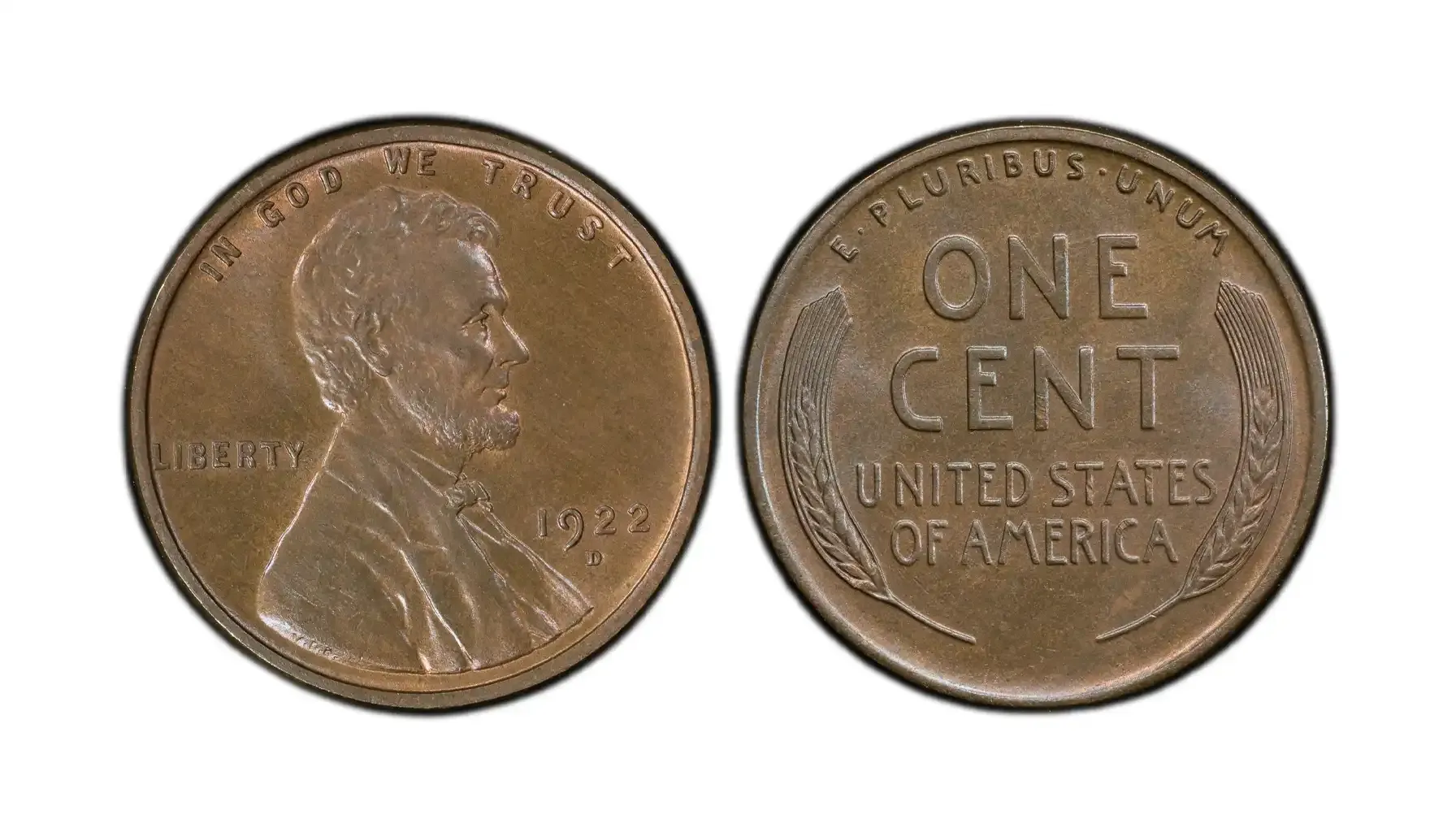
Why No 1922 Pennies from Philadelphia or San Francisco?
1. Adequate Supply from 1920–1921
In 1920 and 1921, both Philadelphia and San Francisco overproduced one-cent coins.
The surplus of Lincoln cents was still in circulation by 1922.
There was no urgent need for additional one-cent coins from those mints in that fiscal year.
2. Resource Allocation & Mint Workload
The Philadelphia Mint was prioritizing other coin denominations and medals.
San Francisco was focused on striking silver coinage and preparing for logistical adjustments.
The Denver Mint, being under less pressure, was chosen to handle all 1922 cent production.
3. Cost Efficiency
The Mint was a government agency under budget pressure.
Instead of running all three production lines, limiting it to one mint (Denver) saved costs on labor, dies, and maintenance.
Result: A Historic Anomaly
This made 1922 the only year between 1909 and 1958 when no cents were struck in Philadelphia.
Since Philadelphia cents normally have no mintmark, the 1922 no D penny (a Denver coin struck without a visible mintmark) causes confusion — but also fuels value due to its rarity and the absence of any Philadelphia issues.
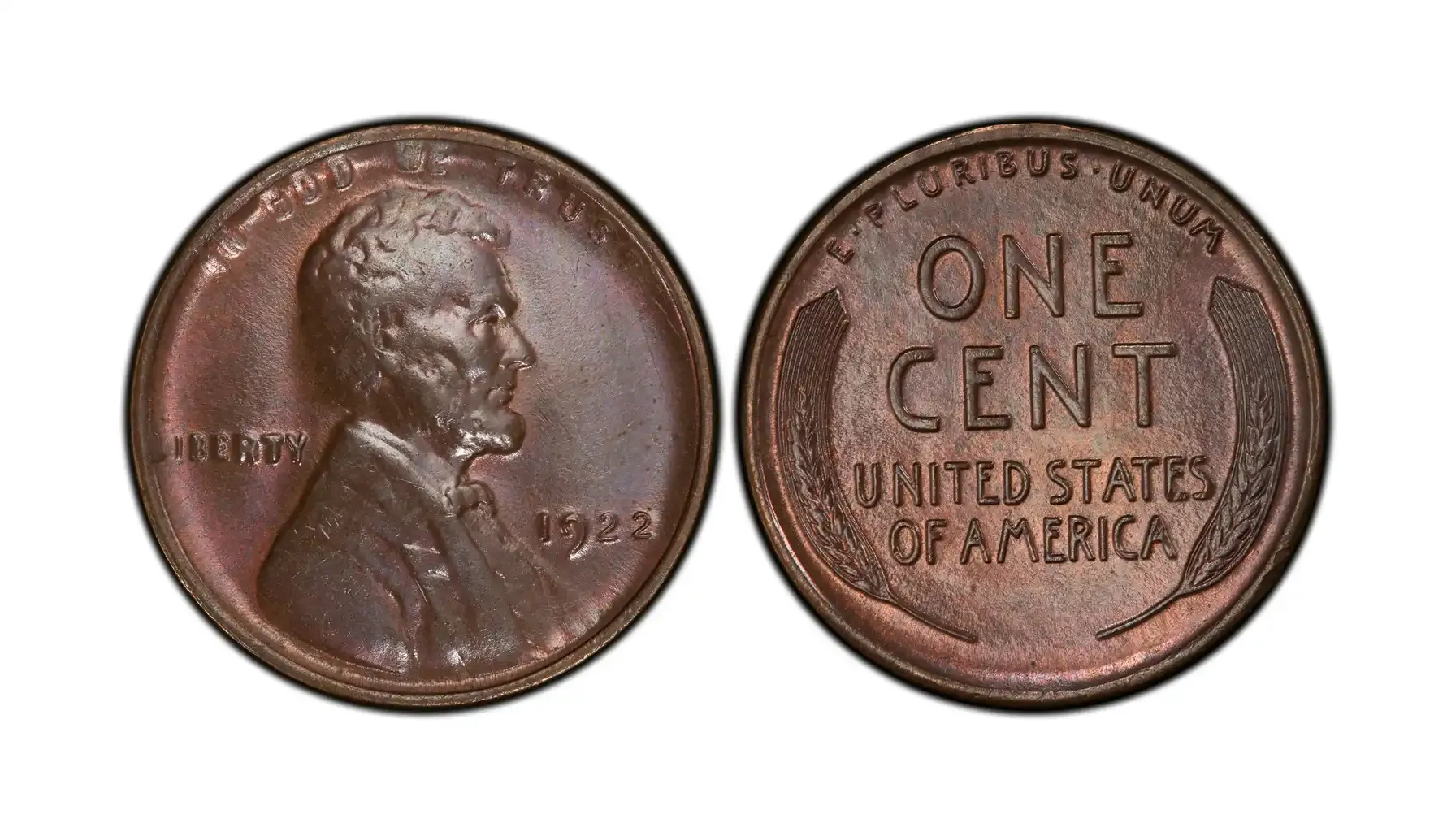
Design
The 1922 Lincoln Wheat penny sticks to the classic Wheat Ears reverse, but subtle flaws in the D mintmark give rise to varieties like:
1922 weak D penny value coins (faint but visible mintmark)
1922 penny no D or no mint mark one (no trace of the “D”)
1922-D penny error coins (doubled dies, die cracks)
These anomalies make it one of the most studied years in Lincoln cent history.
How Much Is a 1922 Penny Worth?
Grade | 1922 D Penny Value Today | 1922 No D Penny Value | 1922 Weak D | 1922-D Penny Error | 1922 Plain Penny |
G4 | $15 | $150+ | $40 | $150 | $200+ |
VG8 | $25 | $250+ | $60 | $200 | $300+ |
F12 | $45 | $300+ | $80 | $250 | $400+ |
VF20 | $75 | $400–600 | $120 | $350 | $600–900 |
EF40 | $120 | $1,000+ | $200 | $500 | $1,500+ |
AU50 | $200 | $1,800+ | $300 | $700 | $2,000+ |
MS60 | $350 | $4,000–6,000 | $500 | $1,200 | $5,000+ |
MS63+ | $500–$800 | $8,000–15,000 | $1,000+ | $2,000+ | $10,000+ |
Disclaimer: Prices vary by color (Red, Red-Brown, Brown) and if designated as Full Strike or Full Detail.
Errors and Varieties That Pay
The 1922 penny error category is one of the most interesting in American coin collecting — not because of dozens of wild types, but because of a few ultra-specific varieties with massive price differences.
Unlike modern errors with flashy double strikes or broadstrikes, the 1922 wheat penny value is driven by one critical element: the mintmark… or lack of it.
1. 1922 No D Penny (a.k.a. 1922 Penny No Mint Mark Value)
Most famous error/variety
Why it exists: The "D" mintmark on some Denver dies wore off completely due to over-polishing or clogging.
Appearance: Absolutely no visible mintmark on a coin struck in Denver.
Authentication: Needs expert confirmation, because no 1922 pennies were made in Philadelphia. That means every real no-mintmark cent from 1922 is an error by default.
Value: The 1922 penny coin value in this case can exceed $15,000+ in MS condition, especially if it's sharply struck and has clean wheat lines.
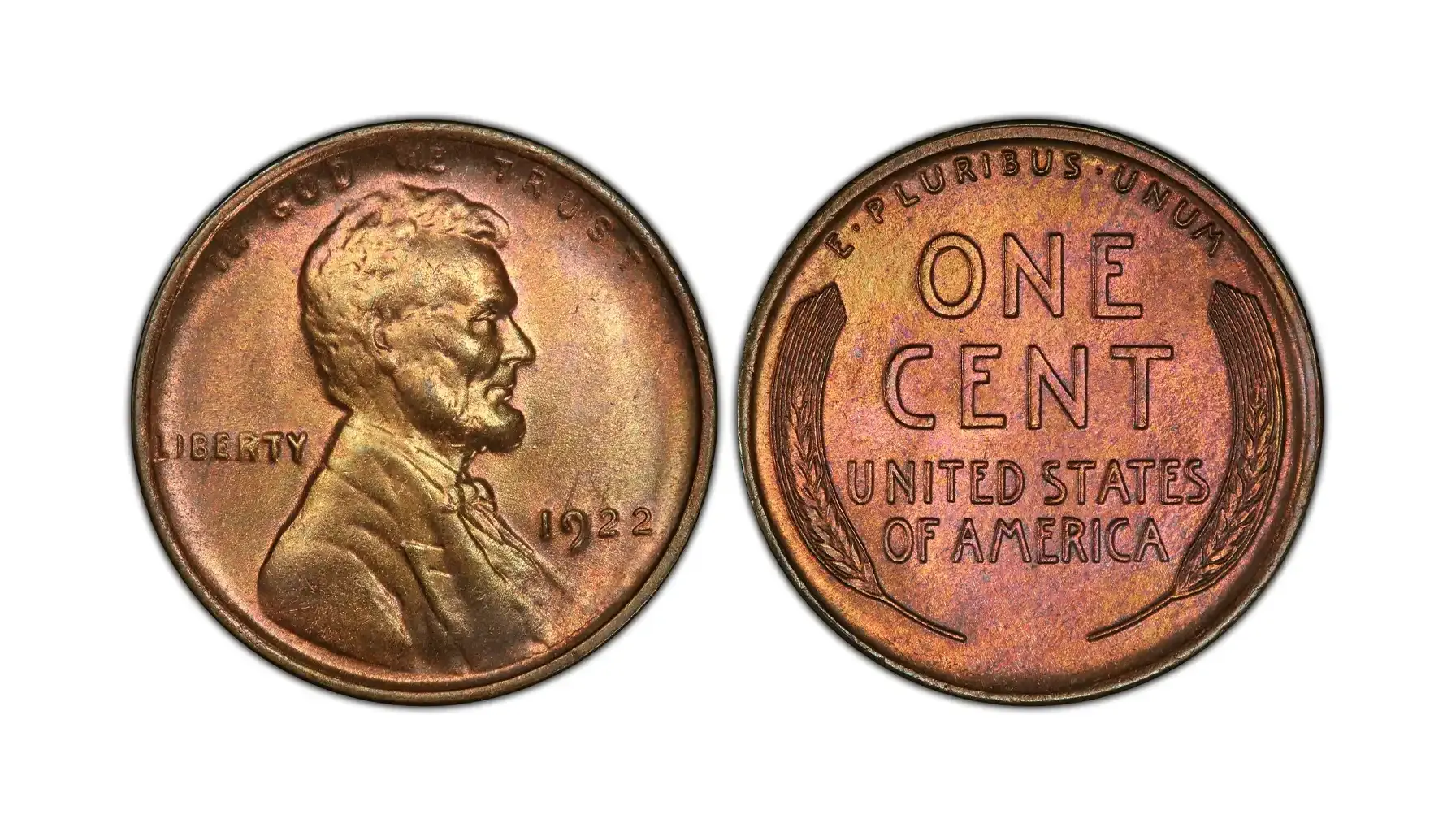
2. 1922 Weak D Penny
What is it: A coin where the “D” is visible but faint — struck from a worn or over-polished die, but not fully missing.
Appearance: Weak “D” that’s often mistaken for missing.
Why it matters: It’s not as rare as the no-D but still sought after. A true 1922 weak D penny value in MS64+ can hit $1,000+.
Must be differentiated from well-worn regular 1922-Ds. A weak D is by error, not wear.
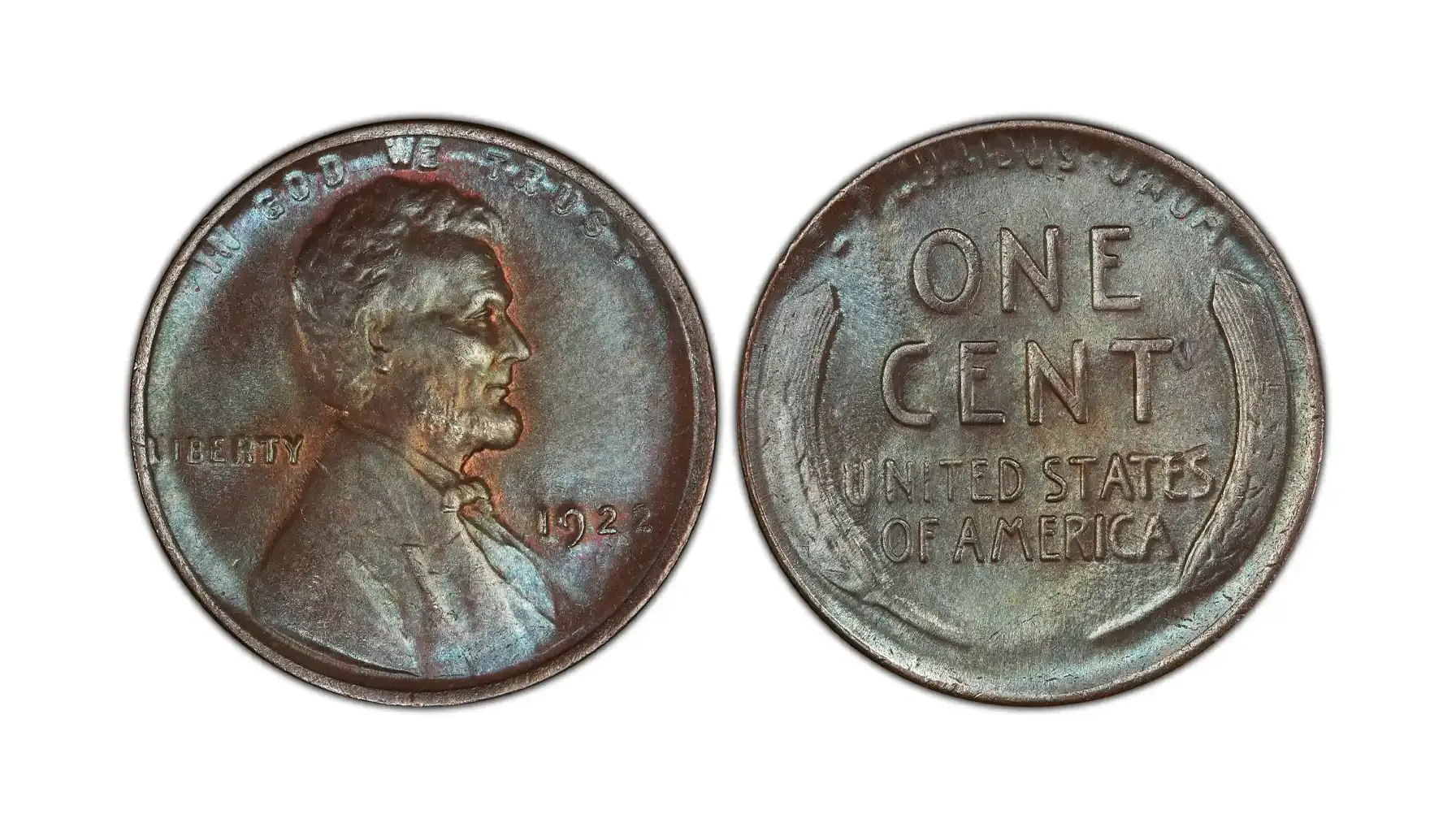
3. 1922-D Penny Error Types (Die Damage)
There’s more to love than just the mintmark mysteries. The 1922-D Lincoln penny can also feature lesser-known but valuable mint errors:
Common Varieties:
Die cracks across Lincoln’s shoulder or wheat stalks
Retained die breaks (partial die failure visible as raised blobs)
Off-center strikes (misaligned dies)
Cuds on the rim (caused by die chunks breaking off)
These examples can range from $50 to over $500 depending on how dramatic the flaw is.
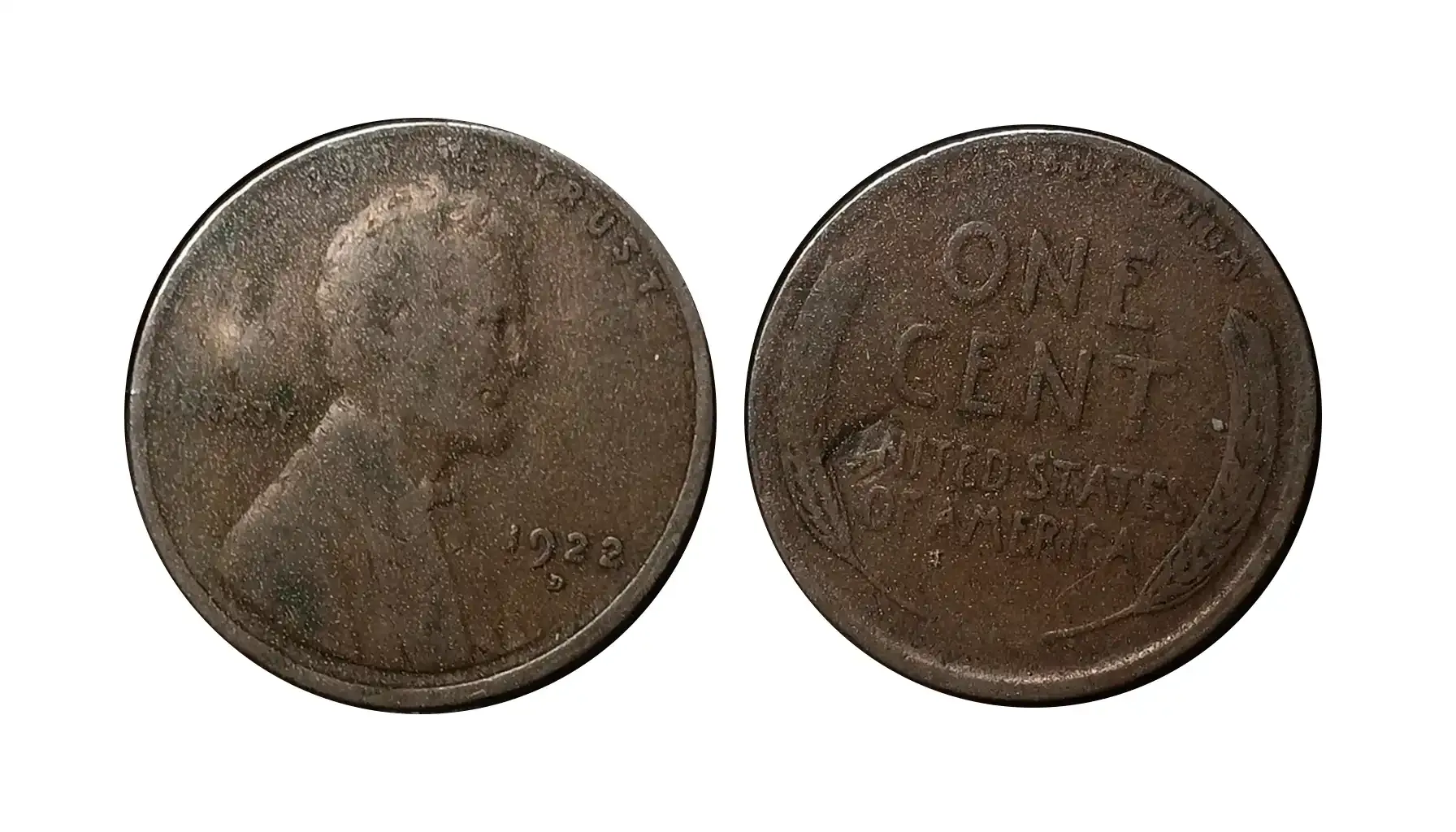
4. 1922-D Lincoln Penny Coins Copy 95% Coper
FAKE ALERT: Many listings on marketplaces show replica coins labeled so.
These are not authentic U.S. Mint products
They are required by law to include “COPY” on the surface (check carefully)
Value: Almost nothing numismatically — these are souvenirs or fakes, not investments
Always weigh your coin (should be ~3.11g) and verify with a tool like the Coin ID Scanner.

5. 1922-D Doubled Die (Rare)
True doubled die varieties are extremely rare for 1922-D
Most "doubling" seen is machine doubling, which is not valuable
If genuine, 1922-D penny value with a doubled die can spike well into four figures
Color Grading: Red vs. Red-Brown vs. Brown
Color designations apply only to uncirculated (Mint State) copper coins, like your 1922 D Wheat penny value. Here's what they mean and how they affect value:
Color Code | Meaning | Visual Traits | Value Impact |
RD (Red) | Retains 95%+ of original mint red luster | Bright orange-red, vibrant copper color | Highest premiums |
RB (Red-Brown) | Between 5% and 95% red, some natural oxidation | Mixture of red and brown; usually light toning | Moderate value |
BN (Brown) | Less than 5% red; fully oxidized | Dark chocolate brown, possibly spotted | Lowest value |
Example:
A 1922 no D penny in MS63 Brown might fetch ~$2,000
The same coin in MS63 Red could bring $5,000+
For rare varieties like 1922 penny no mint mark, Red examples are exceedingly rare and command significant auction attention.
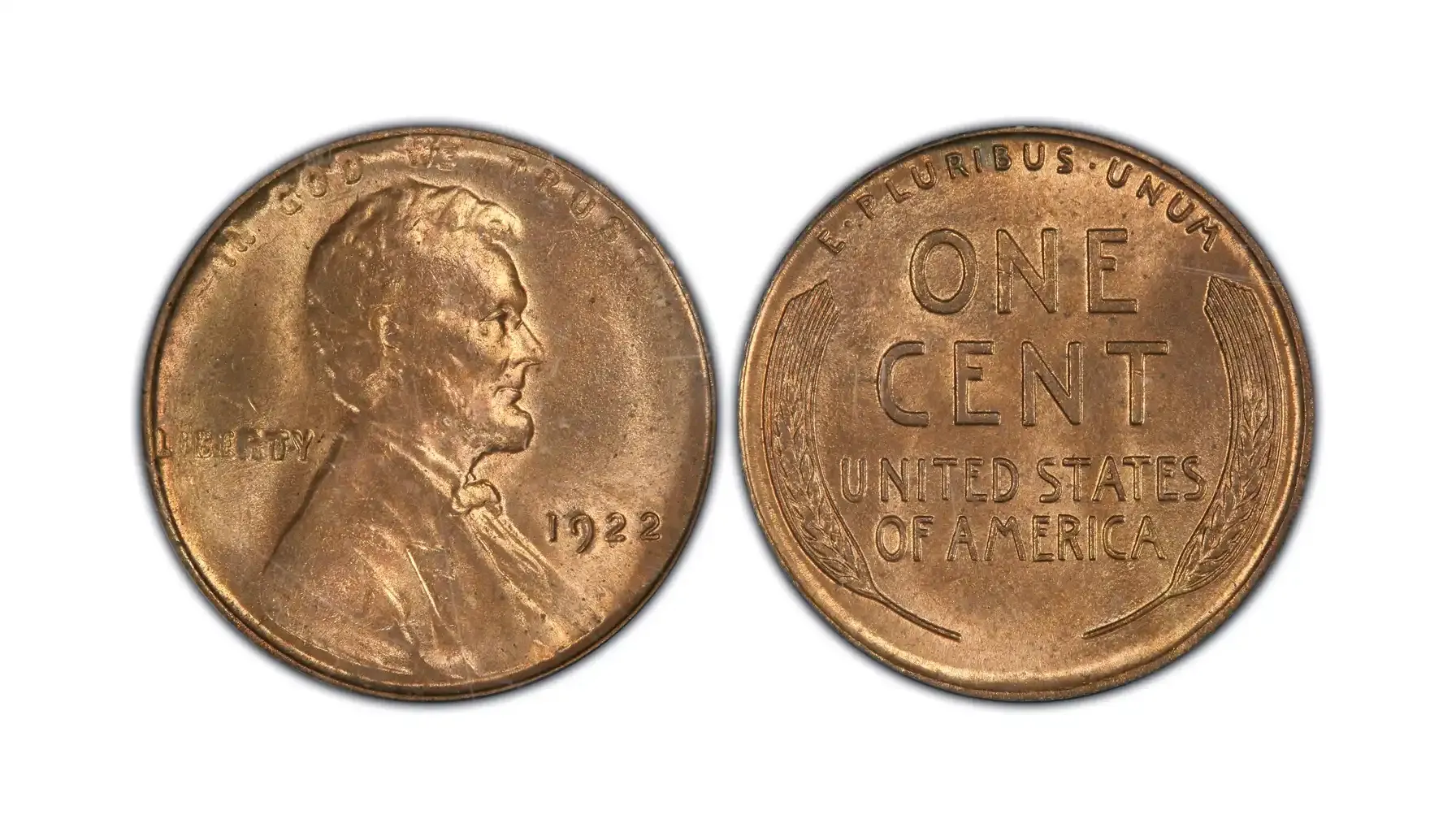
Full Strike / Full Detail (a.k.a. "Strong Reverse" or "Strong Obverse")
For 1922 pennies, where most were weakly struck, a Full Strike (FS) or Strong Detail coin is a big deal:
Designation | Meaning | Value Effect |
Full Strike | All design elements are fully struck — Lincoln’s hair, beard, wheat stalks | Increases price 2× to 5× |
Average Strike | Soft or flat details due to worn dies or low pressure | Lower price, even in high grades |
Example Comparison (MS63)
Designation | Color | Estimated Value |
Average Strike | Brown | $2,000 |
Full Strike | Brown | $4,000+ |
Full Strike | Red-Brown | $6,000+ |
Full Strike | Red | $10,000+ |
Grading Companies That Assign These:
PCGS: Assigns RD, RB, BN + Full Strike commentary in cert
NGC: Assigns RD, RB, BN + strike quality descriptors
Both note strike quality in grading notes or special designations
When evaluating your 1922 wheat cent:
Check the color — RD > RB > BN
Examine the strike — Is it full? Can you see Lincoln’s jawline? Are the wheat stalks sharp?
Use this to inform real market value. An MS64 RB with full detail may be more valuable than an MS65 BN with flat strike.
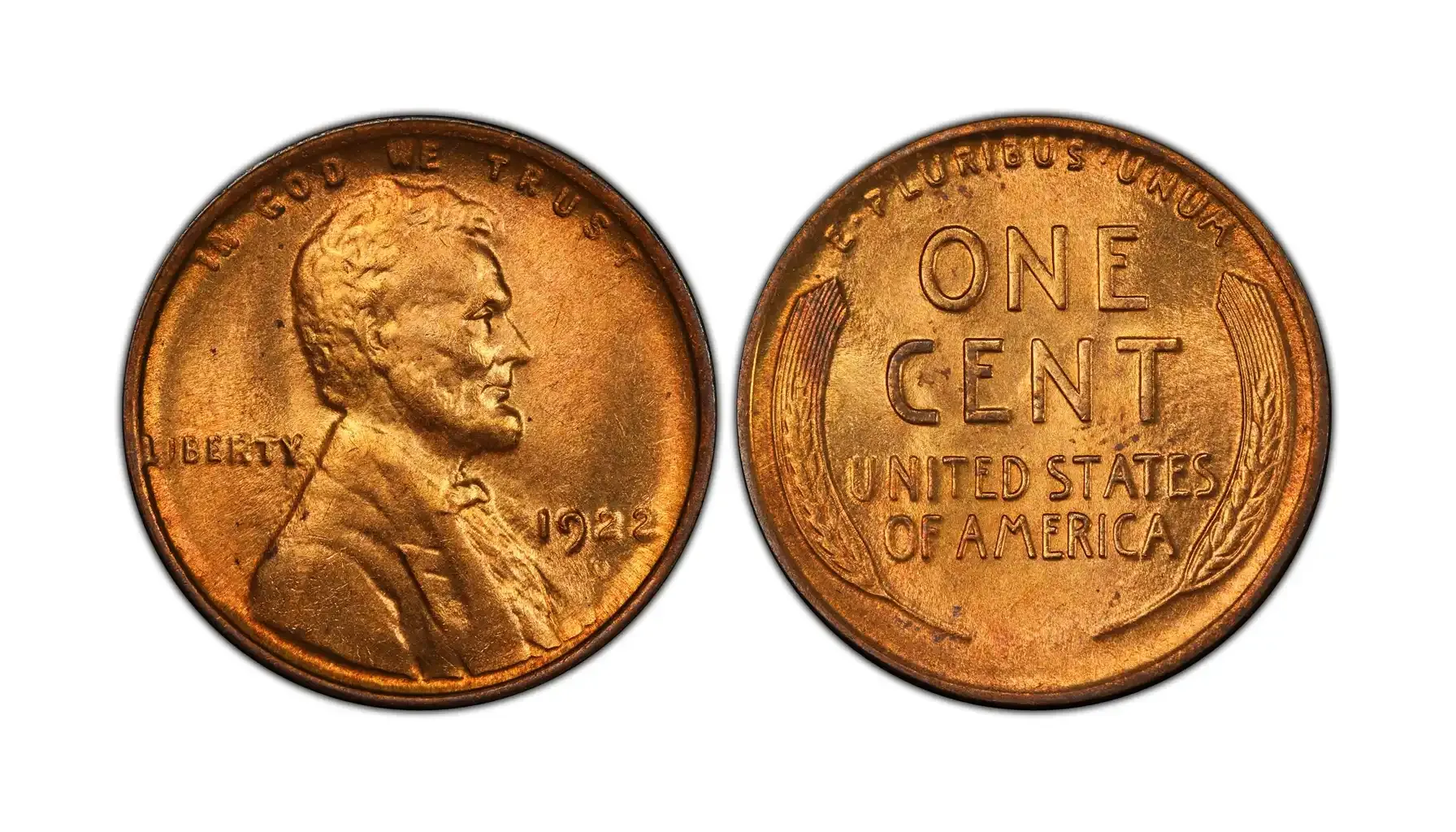
What Is a 1922 Penny Worth If You're Selling?
If you're wondering, “What is a 1922 penny worth if I want to sell it?”, here’s what matters:
Grade: Get it professionally graded
Variety: A 1922 no D penny for sale can fetch thousands
Authentication: Don’t sell without verifying — fakes are rampant
Sites like Heritage Auctions, eBay, and GreatCollections show verified sales regularly topping $5,000 for high-end examples.
Not Just American: Other 1922 Examples
Though the U.S. was the only country with Lincoln wheat cents, other nations produced fascinating coins in 1922:
1922 Australian Penny
Featuring King George V
It is notable in high grades
1922 Australian penny value ranges from $1–$500+
1922 Canadian Penny
King George V bust
It is not rare but collectible
Worn examples go for a few dollars; top-grade coins can hit $100+
1922 P Penny?
Technically doesn’t exist — Philadelphia struck no cents in 1922
Any 1922 P (as well as any 1922 S penny) is either a mislabel or misidentified
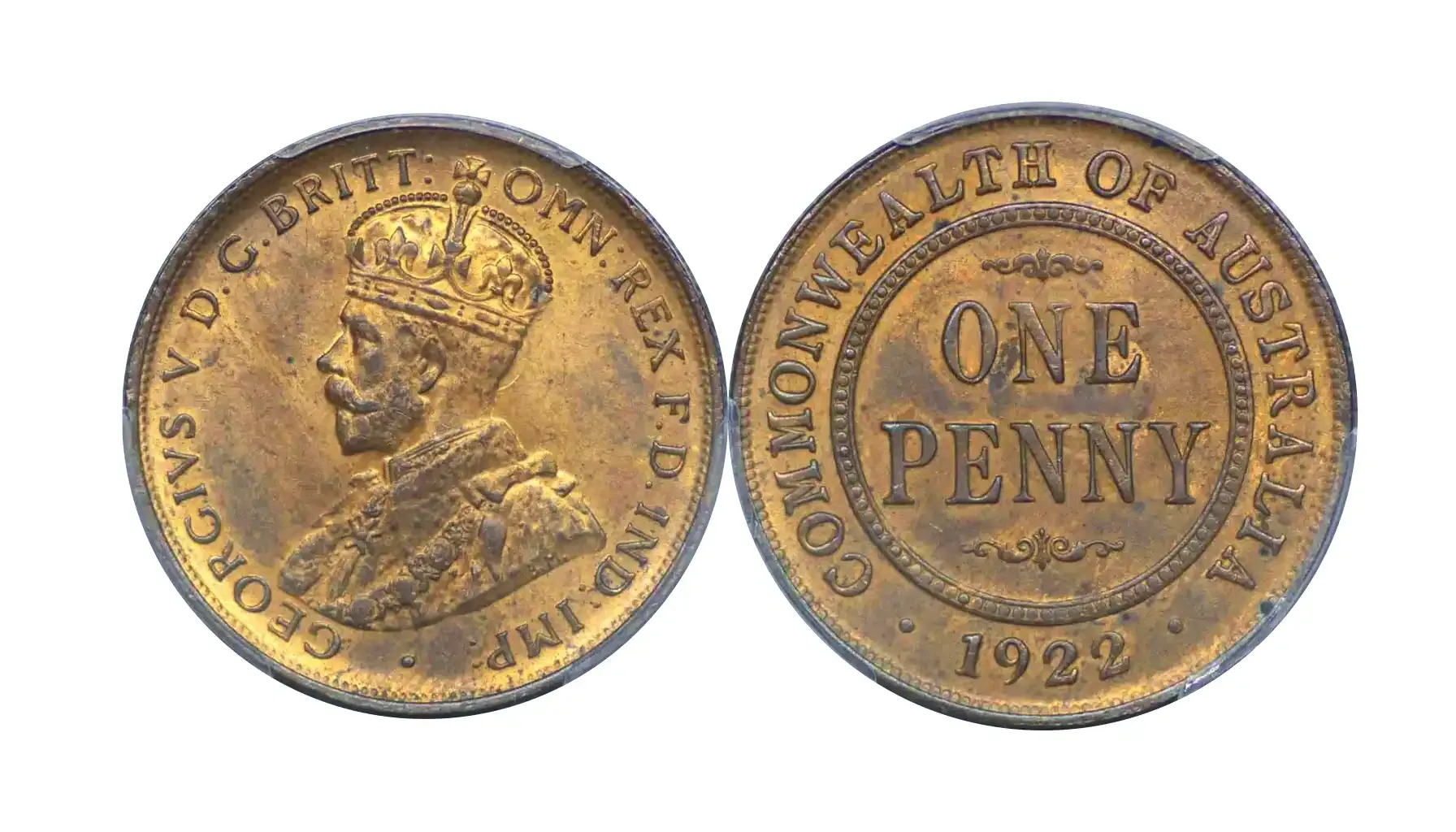
Want to Know Your 1922 Lincoln Penny Value Today?
If you’ve got an old coin and suspect it might be rare, or you want to verify an error, don’t rely on guesswork.
Use the Coin ID Scanner app — your pocket numismatist.
This app uses advanced AI to:
Instantly identify coins from images
Detect different varieties
Estimate current market value using historical data
Track and catalog your Lincoln cents
Whether you’re asking “how much is a 1922 D penny worth”, or what the value of a 1922 penny for sale is, this tool gives instant, accurate results — especially for unique cases like the 1922 Wheat penny no mint mark.
FAQs
What is the difference between a 1922 Plain and a 1922 Weak D coin?
1922 Plain:
Absolutely no mintmark visible.
A result of a completely obliterated D mintmark due to extreme die wear.
Highly valuable — a top-tier rarity.
1922 Weak D:
A faint “D” is still visible under magnification.
Caused by a partially polished die but not fully missing.
Valuable but typically worth far less than a true plain (no D) variety.
If your coin shows even a ghost trace of a D, it’s a weak D, not a no D.
Full 1922 no D coins are much scarcer and can sell for 5× to 10× higher.
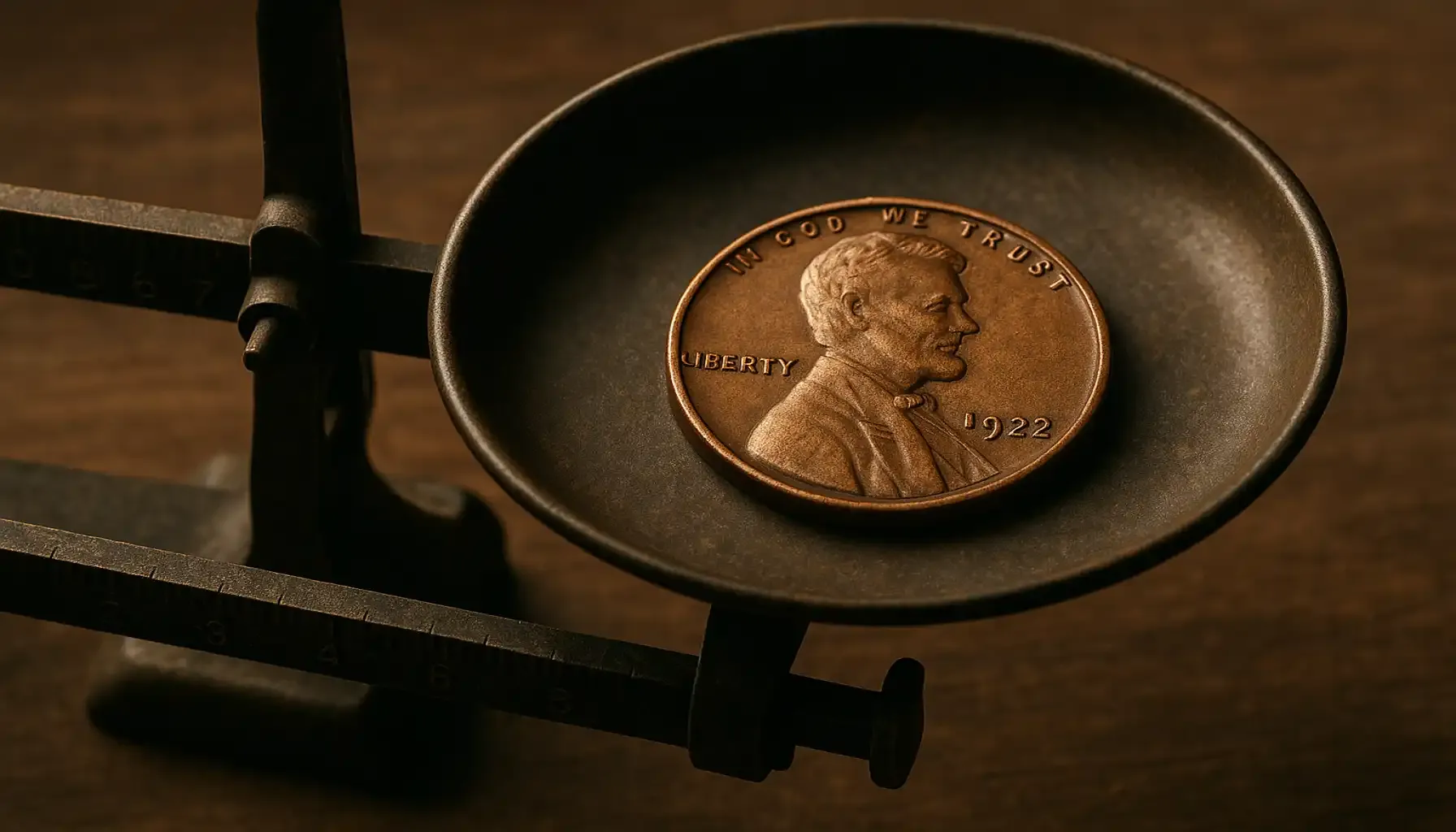
Why are Full Red (RD) 1922 cents so rare?
Most surviving 1922 Lincoln cents are Brown (BN) or Red-Brown (RB) because:
Low striking quality at the Denver Mint.
Poor handling and storage (coins were roughly bagged, not preserved).
90+ years of oxidation, even if kept away from air.
Are all 1922 pennies made of the same metal?
All genuine U.S. 1922 wheat pennies were made from the same classic Lincoln cent alloy:
95% copper, 5% tin and zinc.
Weight: Approximately 3.11 grams.
However, some modern copies or counterfeits often mimic the look but not the authentic composition.
These fakes might:
Be slightly lighter or heavier.
Have incorrect surface tones.
Lack natural aging patterns.

